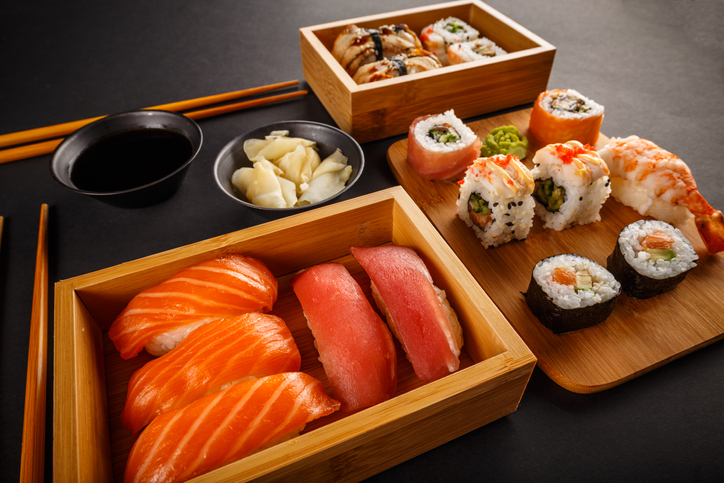Japanese cuisine is a culinary journey that delights the senses with its intricate flavors, seasonal diversity, and remarkable health benefits. Rooted in a tradition of combining staples like rice or noodles with soup, pickles, and a variety of okazu side dishes, a typical Japanese meal is a harmonious balance of textures and tastes. As an island nation, Japan’s culinary landscape is heavily influenced by seafood, offering an array of dishes that showcase the freshest catch of the season. Each meal is a testament to centuries of culinary evolution, presented with meticulous artistry that pleases both the eye and the palate. Join us as we explore the essence of Japanese dining through eleven delectable dishes that are sure to tantalize your taste buds and leave you craving for more.
1. Tempura
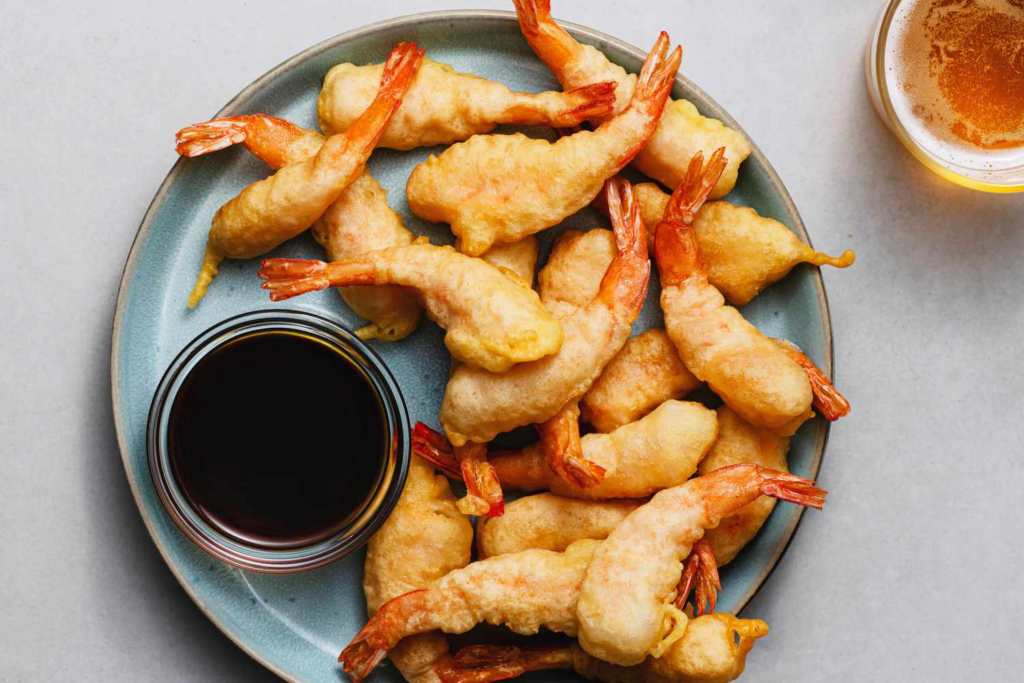
With its crispy goodness, tantalizing flavors, and wallet-friendly price tag, tempura stands out as a beloved favorite among foodies in Japan. Whether you opt for prawns, fish, squid, veggies, or tofu, each ingredient is delicately coated in a light batter and swiftly fried to perfection, ensuring that the nutritious vitamins and minerals remain intact. While tempura can certainly shine solo, it’s often found adorning a bed of noodles or rice, accompanied by an assortment of dipping sauces that elevate its already exquisite taste.
2. Noodles: soba, udon and ramen

Noodles offer a scrumptious and budget-friendly alternative to rice-based meals, adding a delightful twist to Japanese cuisine. Crafted from buckwheat flour, soba noodles boast a distinct grey hue and can be savored either piping hot in broth or chilled with a flavorful dipping sauce. Meanwhile, udon noodles, characterized by their thickness, provide a hearty base for both hot and cold dishes, complemented by soy or fish-based soup.
Ramen, with its roots tracing back to China, has become a staple in Japanese culinary culture, boasting over 10,000 specialty shops nationwide. Available in thin or thick variations, ramen is a beloved go-to dish, typically featuring a steaming bowl of broth infused with fish, pork, miso, or soy, and topped with tantalizing additions like tempura or slices of meat. Embracing convenience, many noodle joints employ a vending machine system, allowing patrons to customize their orders effortlessly. Simply select your preferred noodle type, serving size, and desired toppings, then exchange your ticket with the chef or staff for a freshly prepared bowl. Whether seated or standing, embrace the communal spirit as you savor each slurp of these delectable noodles, joining in the shared joy of this quintessential Japanese culinary experience.
3. Sushi
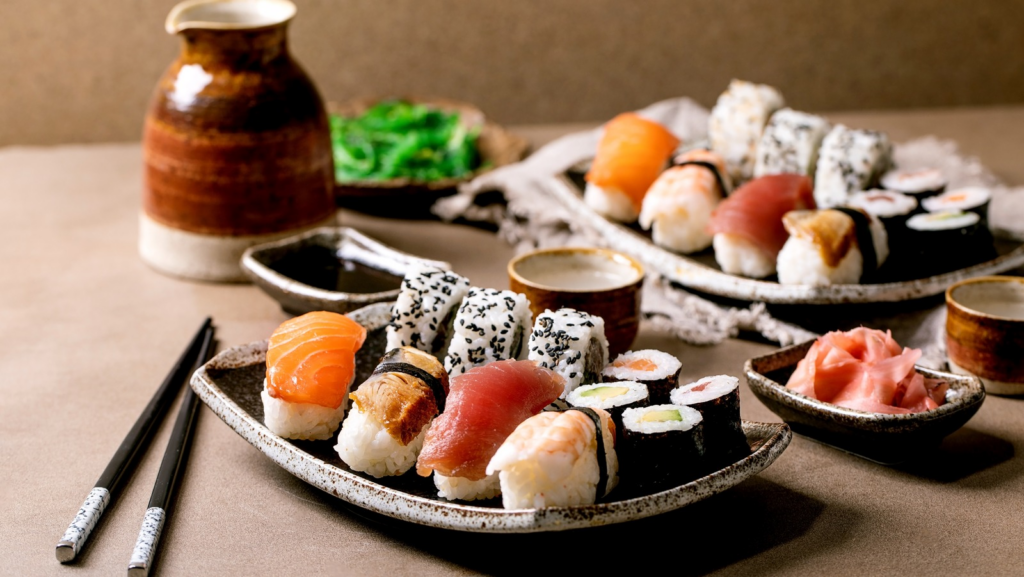
Japan’s globally renowned delicacy, sushi, often falls victim to misconceptions abroad. While many believe it to be solely raw fish, the essence of sushi transcends mere ingredients. True sushi mastery lies in the meticulous balance of vinegared rice, raw fish, and vegetables, crafted into a myriad of forms. From the classic sushi nigiri, where a slice of raw fish or vegetable delicately crowns a bed of rice, to the rolled perfection of maki sushi encased in nori seaweed, each variation offers a unique culinary experience. Temaki sushi, with its cone-shaped presentation bursting with assorted ingredients, and the comforting embrace of inari sushi, where deep-fried tofu envelops the rice, further exemplify the diversity within this beloved dish. Amidst Tokyo’s bustling streets adorned with countless sushi shops, there’s an endless array of options waiting to satisfy every palate and preference.
4. Okonomiyaki
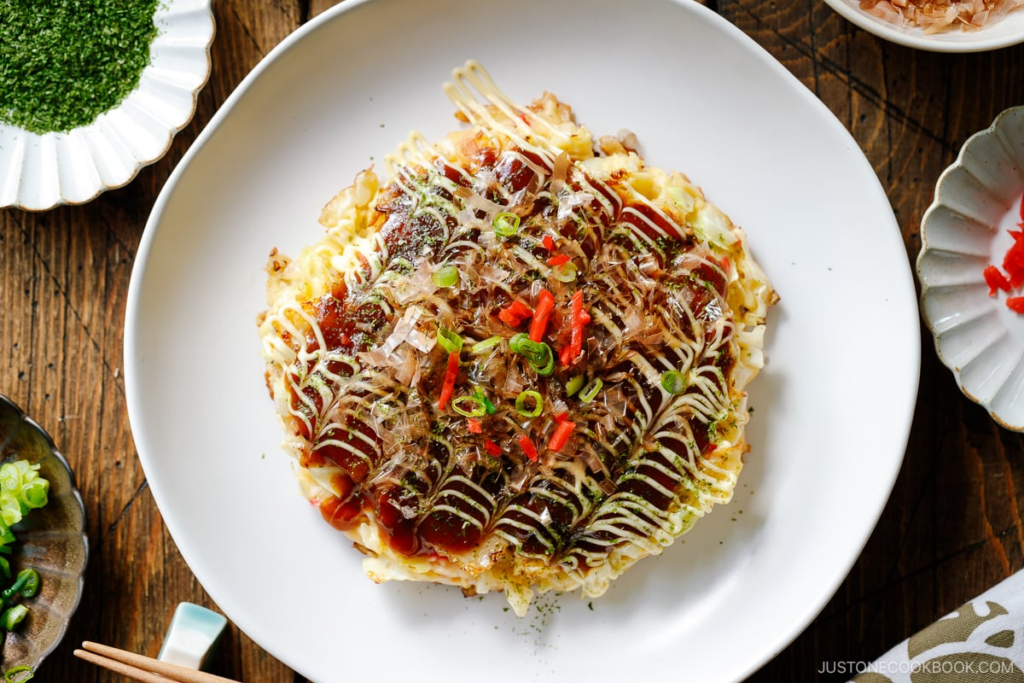
Okonomiyaki offers a delightful dining experience, particularly suited for gatherings of friends or family. Essentially, it’s a batter infused with your favorite ingredients, sizzling to perfection on the grill right before your eyes. Translating to “grill as you like,” okonomiyaki boasts a wide array of ingredient choices, ranging from seafood, beef, and chicken to tofu, cheese, and an assortment of veggies. Once cooked, this savory pancake is adorned with a luscious blend of brown sauce, mayonnaise, and delicate bonito flakes, adding layers of flavor to each bite. Typically, each diner customizes their own okonomiyaki to their taste, and many eateries even offer the thrill of DIY cooking, adding an interactive twist to the meal.
5. Teppanyaki

Teppanyaki isn’t just a meal – it’s an experience that adds a touch of excitement to your dining adventure. Picture yourself gathered around a chef at a large grill plate, where culinary magic unfolds right before your eyes. You’re not just a spectator; you’re part of the show, as the chef skillfully prepares your meal with flair and finesse. It’s not uncommon to find yourself amazed by the chef’s impressive knife skills, with dazzling displays that include juggling and catching tiny morsels mid-air with chopsticks. Whether it’s the renowned Kobe beef or other savory options, teppan menus offer a variety of courses, typically accompanied by vegetables, rice, and pickles. So, get ready to be entertained and indulge in a culinary journey like no other!
6. Teishoku – a set meal

Set meals are a hit, especially during the bustling lunch hours, with most eateries boasting their own version. These hearty meals typically feature a wholesome combination of rice, pickles, soup, and a main course showcasing an array of options like fish, seafood, veggies, or meat. Teishoku, with its generous portions and wallet-friendly prices, serves as a delightful introduction to the everyday flavors of Japanese cuisine.
For those seeking a more refined dining experience, there’s kaiseki—a pinnacle of traditional Japanese culinary artistry. Crafting kaiseki is akin to composing a symphony of flavors, textures, and colors, all meticulously balanced using only the freshest seasonal ingredients. Prepare to be dazzled by its exquisite presentation, though be ready for slightly heftier price tags at these top-tier establishments.
7. Yakiniku

Yakiniku offers a lively and engaging dining experience that’s cherished in Japan. Originating from Korea, it’s a hands-on barbecue affair where you become the chef, grilling up bite-sized portions of beef, pork, and veggies right at your table. The sizzle and aroma draw you in as the thinly sliced ingredients cook swiftly, ready to be dipped into a tantalizing soy-based sauce infused with sesame, garlic, and sake. It’s not just a meal; it’s an event where friends or family gather around, ordering an assortment of plates to savor together, making the most of the leisurely hours spent cooking, chatting, and relishing the flavors. And of course, no yakiniku experience is complete without a side of rice and pickles to complement the feast.
8. Yakitori

In Japan, yakitori isn’t just a dish; it’s a cultural experience, especially when paired with a cold beer. As the night deepens, the lively atmosphere around yakitori stands draws in locals and travelers alike. Yakitori, simply meaning grilled chicken, is a staple of these stands, offering an array of skewers showcasing various parts of the chicken – from succulent breast meat to flavorful wings, hearty hearts, and even crispy skin or the infamous parson’s nose. Whether seasoned with salt (shio) or a sweet-salty sauce (tare), each skewer bursts with mouthwatering flavors. Affordable and delicious, yakitori typically goes for just 100-200 yen per skewer, making it a beloved go-to snack for many.
9. Shabu Shabu and Sukiyaki

Shabu shabu offers a delightful dining experience, perfect for gatherings of friends and families. As plates of thinly sliced meat and an assortment of fresh vegetables are ordered, a bubbling pot of savory soup takes center stage on the table. With chopsticks in hand, each diner eagerly dips a slice of meat into the simmering broth, savoring the ritual of swishing it around until perfectly cooked. The tender meat is then enjoyed after a dip in a flavorful shabu shabu sauce, making each bite a delicious delight. While traditionally beef-centric, shabu shabu can also feature seafood and pork for added variety. Similarly, sukiyaki offers a tantalizing mix of meat, seafood, and vegetables bathed in a sweet-salty soy-based broth. The difference lies in the continuous bubbling of the pot, allowing diners to leisurely fish out their desired slices and perhaps indulge in the luxury of dipping them in raw egg before relishing each mouthful.
10. Fugu (blowfish)

For millennia, the Japanese have shared a unique culinary relationship with the oceans that surround their island nation, where the waters teem with hundreds of varieties of blowfish. Among these, the infamous fugu holds a special place, its consumption dating back as far as 15,000 years. While in Japan, indulging in fugu is almost a rite of passage, not only for its delicate flavor but also for the adventurous spirit it embodies. However, this delicacy comes with a caveat: it must be prepared by a licensed expert, as the fish contains potent toxins. Mastery of fugu preparation is a skill honed over many years, ensuring both safety and exquisite taste. Once expertly handled, fugu can be savored in various forms, from fresh slices of sashimi to simmering in a hot pot or grilling alongside seasonal vegetables. So, for an unforgettable culinary experience and perhaps a tale or two to share, don’t miss the chance to sample fugu during your time in Japan.
11. Unagi (eel)
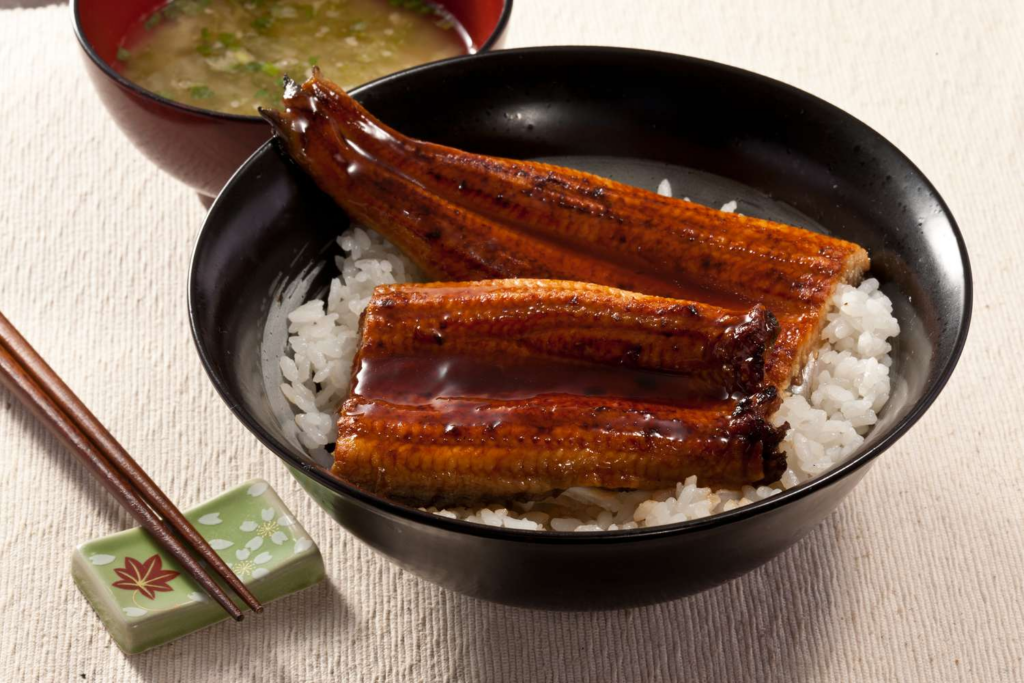
Unagi, a beloved dish in Japan, is not just a flavorful treat but also a nutritious powerhouse packed with essential vitamins and protein. Typically accompanied by a delectable sweet soy teriyaki sauce atop a bed of rice, it’s a culinary delight believed to combat fatigue, especially during the sweltering summer months. Across Japan, you’ll find a plethora of enticing unagi restaurants, with the Hamanako area standing out as a hub where the culture revolves around this slippery delicacy.
